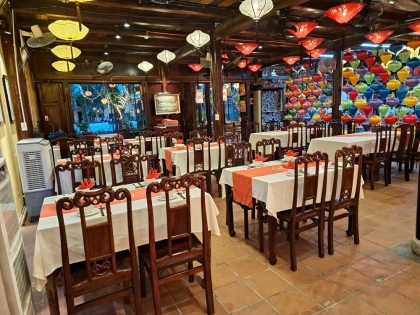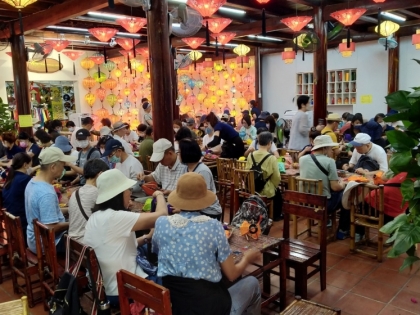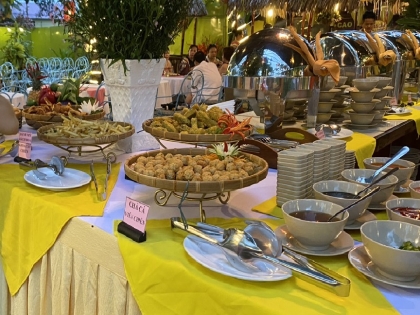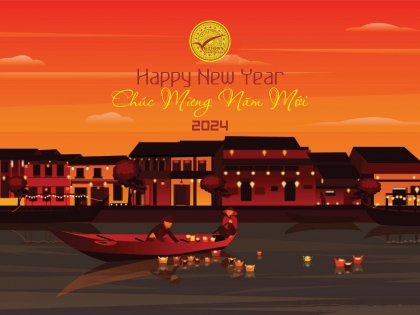HISTORY
Hoi An arose during the 15th to 19th centuries and is a very well preserved former South East Asian trading point. It is melting pot of cultures having been influence by the Chinese, French and Japanese. And these cultures have influenced all aspects from architecture to food to urban layout and quaint atmosphere. Hoi An is in Quang Nam province on the banks of the Thu Bon River, 30km south of Da Nang and on the coast of the East Vietnam Sea.
Hoi An old town features a huge range of ancient architecture including over 1,000 ancient houses, over 80 places of worship, numerous assembly halls and ancient tombs. And in 1999 the ancient town was recognized as UNESCO World Heritage Site. Most of the old houses have been preserved and man converted into shops, galleries and cafes.
HIGHLIGHTS
Cantonese Assembly Hall.
Opening times – daily 08:00 – 17:00 daily
Hoi An Museum of History and Culture. Features 2,000 years of Hoi An history and local heritage. Located in Quan Am Pagoda
Opening times – daily 08:00 – 17:00 daily
Museum of Trade Ceramics.
Opening times – 08:00-17:00 daily
Old House of Tan Ky. Dating back from the 18th Century and features Vietnamese, Japanese and Chinese styles.
Opening times – 08:00-12noon and 14:00-16:30 daily
Ông Pagoda
Opening times – 08:00 – 17:00 daily
Phuc Kien Assembly Hall. An iconic Hoi An symbol in terms of architecture. Features Buddhist statues and alters. Built in 1690, the temple is home to the Goddess of the Sea and caretaker of sailors.
Opening times – 08:00 – 17:00 daily
Phung Hung Ancient House
Opening times – 08:00 – 19:00 daily
Tran Family’s Chapel
Opening times – 08:00 – 17:00 daily
Hoi An Handicraft Workshop
Opening times – 10:15 – 15:15 daily
Japanese Covered Bridge. Dating back to the 18th Century, it spans 18m over a small canal. It was built to connect the Japanese and Chinese quarters
Chuc Thanh Pagoda. Founded by Monk Minh Hai in 1454. It’s the Hoi An’s oldest Buddhist pagoda
Opening times – 08:00-18:00 daily
NB: The Ancient Town operates a ticket system of 120,000 VND for foreign visitors and 80,000 VND for locals. The ticket is valid 10 days and gives entry to many of the ancient town’s places of interest. The money goes towards the preservation and maintenance of the ancient quarter.
ACTIVITIES
Hoi An Riverside. Stroll the waterside area and the backstreets in the day or evening. The riverside is also lined with many cafés, bars and restaurants. At night the streets are stunningly lit up by a myriad of colorful traditional lanterns. Take a local boat from the docks across the river to the other side and carry on exploring.
Hoi An night market. When the Quang Nam province authorities decided to clear up the streets in the old quarter, bring in pedestrian-only zones and replace the old French-era central market with a new structure, street traders and food stalls were affected. Some food stall holders moved into the new market building while others had to find alternative space and they turned to Hoi An islet. In 2011 the islet, once home to a banana plantation, was transformed. The land was cleared to make space for guesthouses, hotels, riverside restaurants and cafes. And it was here, outside the guarded boundaries of the ancient town, that traders and stall holders from the old part established what is now one of Vietnam’s most stunningly famous night markets.
The market runs along Nguyen Hoang Street on Hoi An’s islet, linked to the mainland by 3 short bridges over the River. Consists of around 50stalls selling a multitude of items from jewelry, arts and handicrafts to textiles, souvenirs and small household wares.
Hoi An Night Market
Nguyen Hoang Street
open from 16:00 lantern stalls, 21:00/22:00 for other stalls
Open every night
Craft and artisan Workshops. Within Hoi An ancient town and surrounding villages there are a number of workshops where one can learn traditional crafts of the region. These include:
Lantern making
Bamboo Root sculpture workshop
Pottery making (Thanh Ha Pottery village – 3km from the ancient town center)
Bike hire. Cycling around the old town and back streets, the surrounding villages and rice fields is one of the best ways to see Hoi An and the area
Food. Hoi An also would not be Hoi An without its food. Sign up for a cooking class and/or food tour and learn more about what makes the region’s cuisine so special
Silk and tailor shops. Hoi An is also famous its tailoring industry with a plethora of tailors. Also take the opportunity to visit Hoi An Silk Villagewhich is 2km northwest of the old town. This is a traditional craft village with mulberry trees, horticulture farms, and lotus ponds.
Beaches. If you want an escape from the buzzing vibrant old streets, then head to some of the nearby beaches which include Cua Dai Beach and An Bang Beach both of which are about a 15-minute journey from the center of town
FOOD CULTURE
It is not one element, but many which make Vietnamese cuisine delicious and healthy. A defining feature, for example, is the combination and adaption of influences from France, China and various other Asian nations to create a unique food philosophy.
Following Vietnam’s regional culinary diversity and uniqueness, Hoi An’s cuisine features variations on national iconic dishes as well as local delicacies specific to the town and Quang Nam province. The mix of cultures, especially Chinese, has influenced Hoi An cuisine. According to Chinese tradition all food has energy and is guided by the forces of Yin and Yang which create a regulating balance. This is especially important for food. And also a key factor in the flavors of Hoi An’s cuisine are the vegetables and herbs grown at Tra Que organic vegetable village. These also have their own balancing energies and compliment staple foods such as rice, beans, meats and play an important role in most Hoi An dishes.
Enjoy some of Hoi An’s signature dishes
Cao Lau. The Hoi An dish. Unique to Hoi An due to the town’s water. Water from the town’s wells is used for soaking the rice noodle. And ash from Cham Island giving the noodles a chewy consistency and a distinct flavor. In addition to noodles and the intensely flavored broth, the other compulsory ingredients are slices of pork and crispy pigskin, raw vegetables, coriander, and soya sprouts from Tra Que village.
Mi Quang it consists of thin flat rice noodles and a balance of fresh ingredients. Traditionally mixed with shrimp, pork and vegetables, topped with grilled sesame rice crackers, fried shallots, peanuts and a variety of fresh herbs, the flavors are enhanced with a little sweet-flavored broth making the noodle dish moist
White Rose. Translucent steamed shrimp dumplings made from a 120-year old recipe
Tom Huu or tam huu. Literally means “prawns’ friends” or “three friends”. Prawns and pork are wrapped in water mint leaves grown in Tra Que and secured with thin strips of green onion. The way the ingredients are tied together, creating a “friendship of flavors”, inspired the name of this variety of this special type of Vietnamese fresh roll.
Banh Dap. Banh Dap means cracked or smashed rice pancake. Incorporating yin and yang principles, it combines two kinds of rice. paper sheets. A thin wet sheet sandwiched between two dry brittle ones. To eat, one smashes the ‘sandwich’ creation into small pieces which are then dipped into mam cai, a special fermented salted fish paste.





